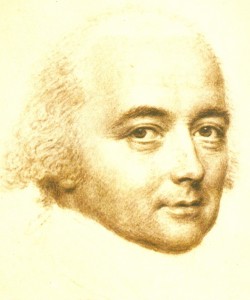 1001 Tattoo Facts: 61-80
1001 Tattoo Facts: 61-80
Article by: SlingerVille Staff
January 01, 2013
1001 Tattoo Facts: 61-80
Paul Sayce wrote one thousand and one tattooing facts that were compiled during the last four years through video- and audio-taped interviews with many of the world’s leading tattoo artists and fans since 1983, when Paul started writing articles for Lionel Titchener’s Tattoo Club Of Great Britain’s Tattoo International monthly magazine. Other source material has been obtained from the British Tattoo History Museum in Oxford, England in his capacity as the museum’s curator.
Today, we are going to share with you facts 61 through 80.
By Paul Sayce
61. After meeting many natives with tattoo marks, famed English naturalist Charles Robert Darwin (1809?1882) wrote about tattooing. For this art form to be mentioned in such distinguished company caused many people look at the tattoo in new light.
62. London-born artist Tracey Emin (1963?) creates (some say) weird and wacky artworks. A scorpion tattooed on Ms. Emin’s left shoulder blade can be seen on the cover of the Sunday Times newspaper’s culture magazine on October 16, 2005.
63. Zara Phillips (1981?), the daughter of Captain Mark Phillips (1948?) and Princess Anne (1950?), has a tongue piercing and is also rumored (in royal circles) to be tattooed.
64. In 2005, stunning Brazilian supermodel and girlfriend of Hollywood movie star Leonardo DiCaprio (1974?), Gisele Bundchen (1980?) spent hours having a complete tattoo bodysuit painted on to promote her own line of shoes that had just hit the shops of High Street.
65. King Harold II (1022?1066) fell to blows at the Battle of Hastings from the swords of four Norman knights and not, as is popularly believed, from an arrow through the eye. Because, it is believed, a lucky arrow did indeed hit Harold in the eye and destroy his facial features, it was Harold’s mistress Edith Svanneshals and Mallet de Granville who found the King’s body many hours after the battle, and it was Edith who recognized the King’s mutilated remains because of the Saxon words Edith and England pricked (tattooed) on his chest.
66. Sir Martin Frobisher (1535?1595), one of England’s finest sailors, set out in 1576 on the first of three unsuccessful voyages to find a northwest passage to China. Although he had little success, Frobisher brought back to England an Eskimo woman called Arnaq, who had chin and forehead tattoos. Sadly, Arnaq died shortly after arriving in England and was buried at St Stephen’s church, Bristol, on November 12, 1577.
67. By banning tattooing via the church in England in 787 A.D., the church caused tattooing to becom an activity that almost died out, and certainly went underground until the golden age of the pirate and explorer.
68. William Dampier was the first Englishman, in 1691, to set foot in Australia. Traveling the world three times, Dampier returned to England on September 16, 1691, bringing with him the tattooed Prince Giolo (a.k.a. Jeoly), who soon became an instant attraction. Crowds would come from miles around to see him, as he was tattooed from head to toe.
69. King George III of England, on the recommendation of the Royal Society, gave his blessings to an expedition to Tahiti to observe and record the transit of the planet Venus, which was due to pass between the Earth and the sun on the third of June, 1769. Tahiti was believed to be the best place the transit could be observed. The renowned geographer and astronomer Alexander Dalrymple (1737?1808) was first assigned the task, but due to his lack of seafaring knowledge, the command was given to forty-year-old James Cook (1728?1779). The ship, the Earl of Pembroke, was refitted and the name changed to the Bark Endeavour.
70. On Cook’s second voyage to the Pacific (sailing from Plymouth, England, July 13, 1772), captain Tobias Furneaux took back to England, in 1774, the tattooed Polynesian Omai, who was placed into the care of the Earl of Sandwich, first Lord of the Admiralty and Joseph Banks, who gave Omai lessons in the art of manners. Omai hobnobbed with royalty and soon became the wonder of the age.
71. In May of 1787, Captain William Bligh began a historic voyage to secure breadfruit plants in Tahiti. At the end of September, the Bethia was refitted at Deptford, at a cost of 4,456 pounds, and underwent a name change to the HMS Bounty. Of all the twenty-five who eventually mutinied, twenty-one had become tattooed in Tahiti, and Bligh carefully recorded each and every one of the crew’s tattoos in his records.
72. Not only did the white man bring many things that fascinated the Maori, he also brought disease and, along with the intertribal fighting of the 1820s, it was feared that the Maori people would die out. For history’s sake, it was decided that the people and the customs should be recorded. Major general Horatio Robley became one such recorder. Robley drew many drawings and painted a number of paintings that depicted the Maori Moko, which he did on the battlefields. Many of his works became classic, historic records of this period (1864?1866).
73. Back in Britain, the stories of Bligh’s plight with the HMS Bounty and the successes of Giolo and Omai, caused a number of seafaring men to give up the sea to become tattoo exhibits at various fairgrounds. And not just men. Several women became tattooed icons and a certain Miss Cary appeared at a London theater describing how, as a child, she was kidnapped and elaborately tattooed.
74. Tattooing is prohibited in the Torah (or Tanakh) and the Koran (Quran). In the Torah there is a rabbinic text prohibiting the burial of (Jewish) bodies with tattoos, though it must be pointed out that this is very rarely enforced. The Koran also prohibits tattooing, although there is no direct reference to the art form, but it is widely interpreted in the book of Islam that the Prophet Muhammad frowned upon certain forms of body manipulation (hence tattooing), although tattooing is indeed popular in some Muslim counties.
75. In 1862, tattooing really took off in terms of popularity, for it was in that year the Prince of Wales visited the holy land of Jerusalem. While he was there, at the age of eighteen, he was tattooed by Levantine tattoo artist Francois Souwan, who tattooed the Prince’s arm with a design that featured the cross of Jerusalem. Edward became King Edward VII, upon the death of his mother Queen Victoria in 1901.
76. Sir Roger Tichborne was believed shipwrecked when he sailed on the La Bella in 1854, and was lost in a great tragedy. So the reappearance, in 1866, of a man claiming to be Sir Roger caused great concern for the family, for the man tried to reclaim Tichborne House, the residence the family had owned for the past eight hundred years. During the court case that followed, tattoos played an important role in proving that the man was indeed a fraud. It was Lord Bellews, Sir Rogers’s best friend, who described how, in 1848, he had tattooed the letters RCT on his friend’s left forearm and that Sir Roger returned the favor by tattooing an anchor on his own arm. The imposter turned out to be a London butcher named Arthur Orton.
77. Albert Victor and prince George Frederick Earnest Albert were reported to have been tattooed while serving in the Royal Navy on the HMS Bacchante in 1879. Hearing this, the boys’ mother, Princess Alexandria, reprimanded them by mail. This prompted the boy’s tutor, John Neale Dolton, who was with them on the voyage, to reply back on January 27, 1880, “I wish to set your Royal Highness’s mind at rest about the tattooing. The skin is as clear and white as the day they left home”
78. Arguably the most significant factor in the reemergence of the ancient art of tattooing was the electric tattoo machine, invented by Irish-American Samuel O’Reilly and patented at the United States patent office on December 8, 1891 (patent number 464,801).
79. David W. Purdy opened England’s first professional tattoo studio in the north of London’s Holloway neighborhood in the late 1870s.
80. Before the tattooing of the letter D for deserter and BC for soldiers with bad character, the British Army used to brand the letters onto the men, but, in 1717, this practice was abolished and pricking (tattooing) took its place. The Brits finally banned all body markings as punishments in 1871.
Source: http://tattooroadtrip.com/1001-tattoo-facts-61-80/
Login to comment
Comments
No comments yet.

